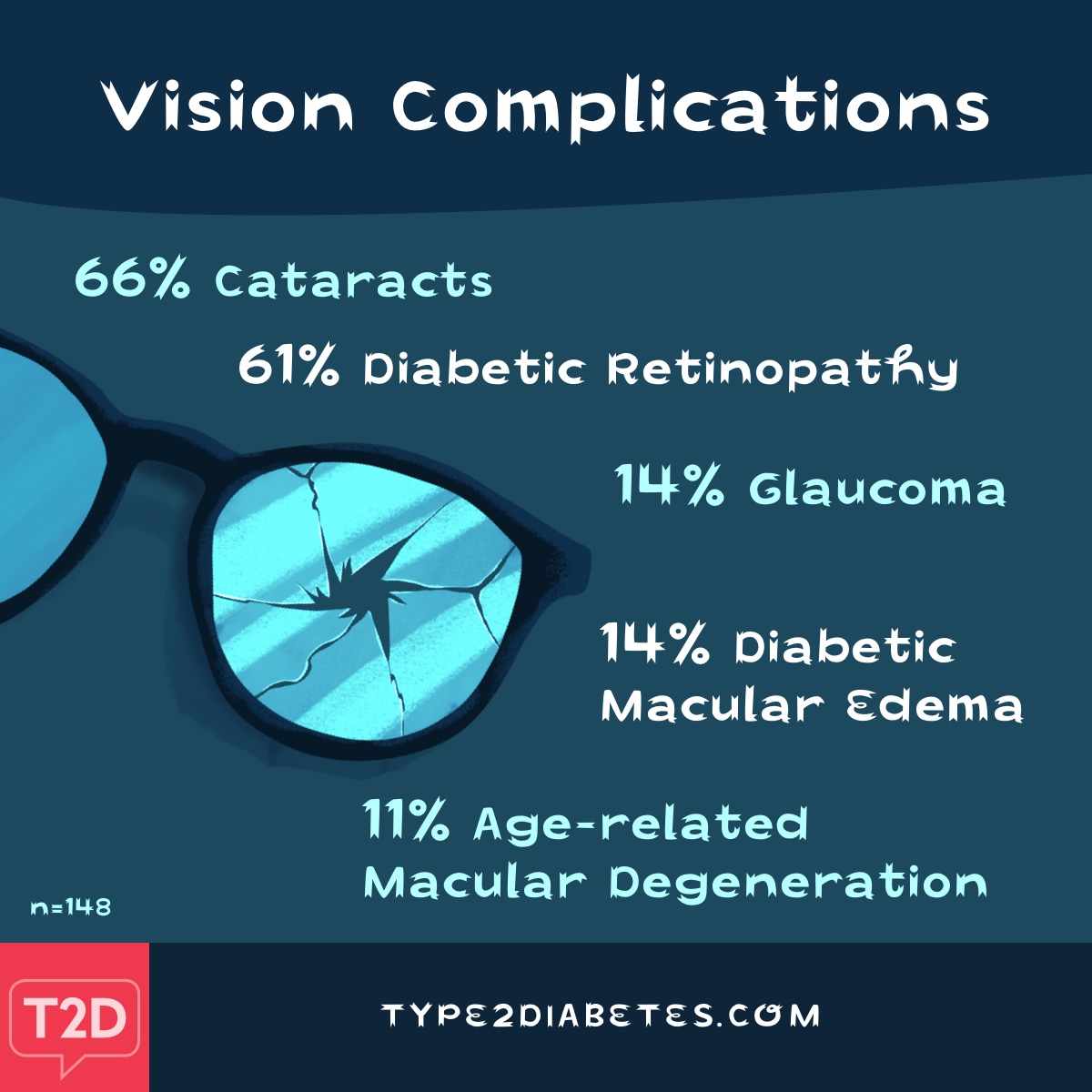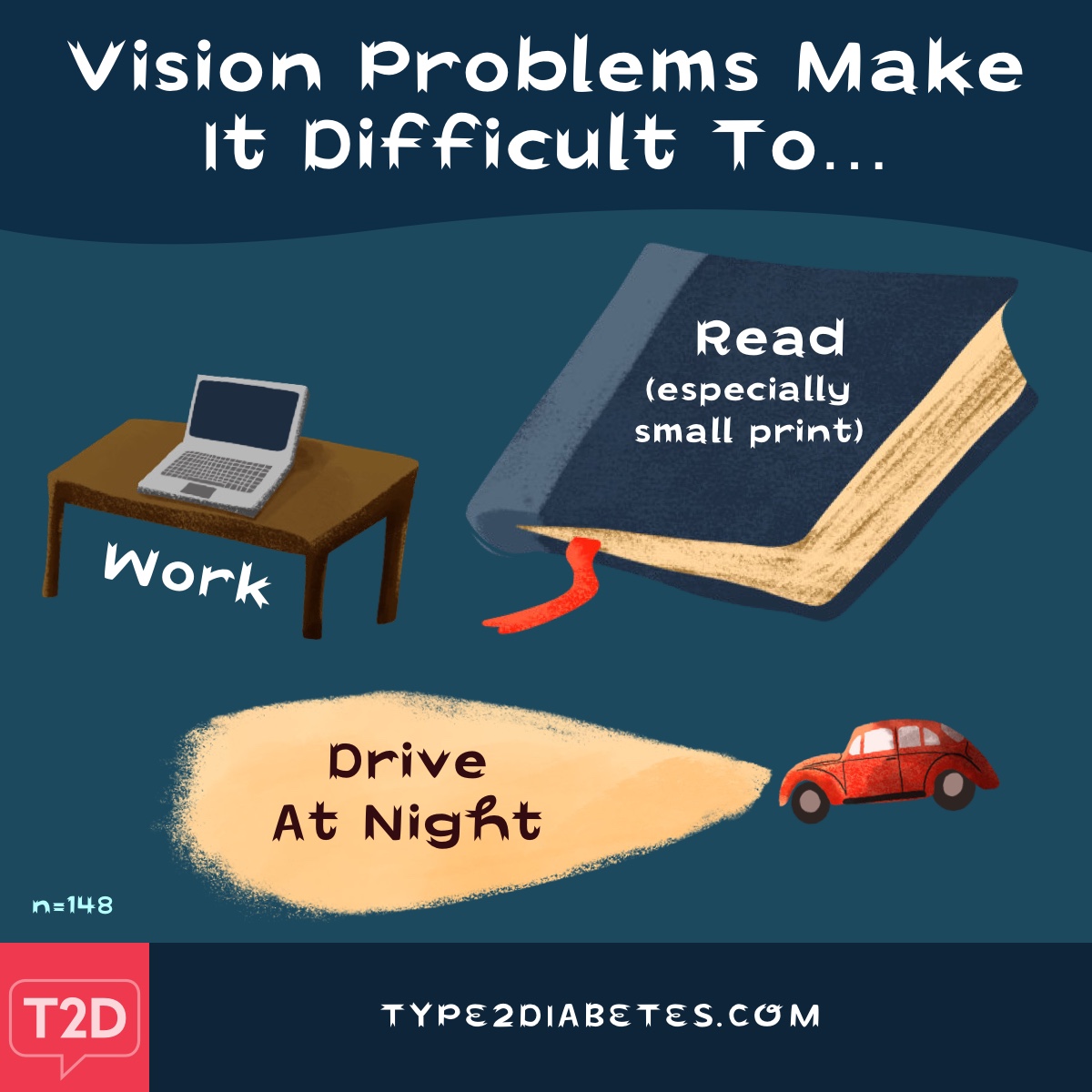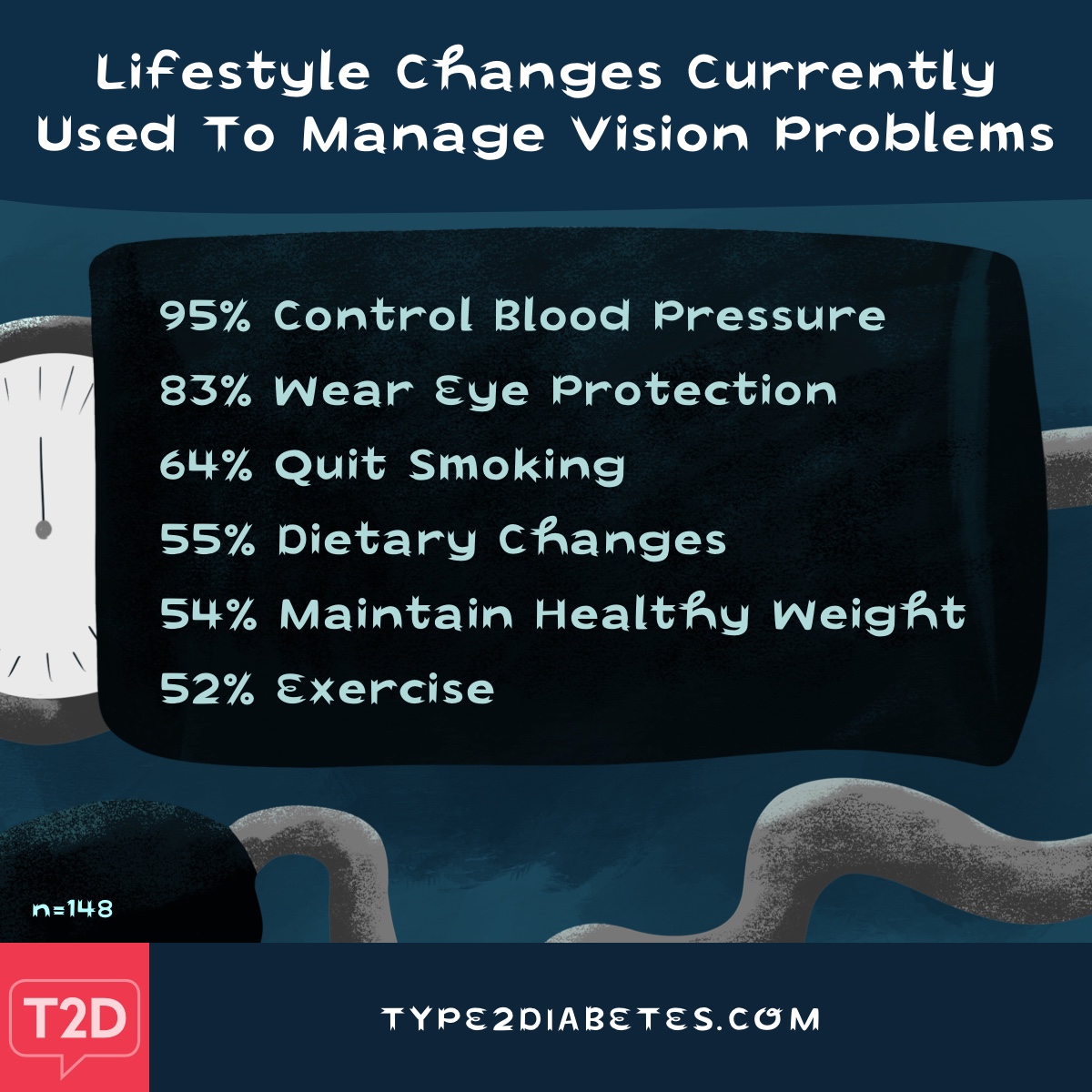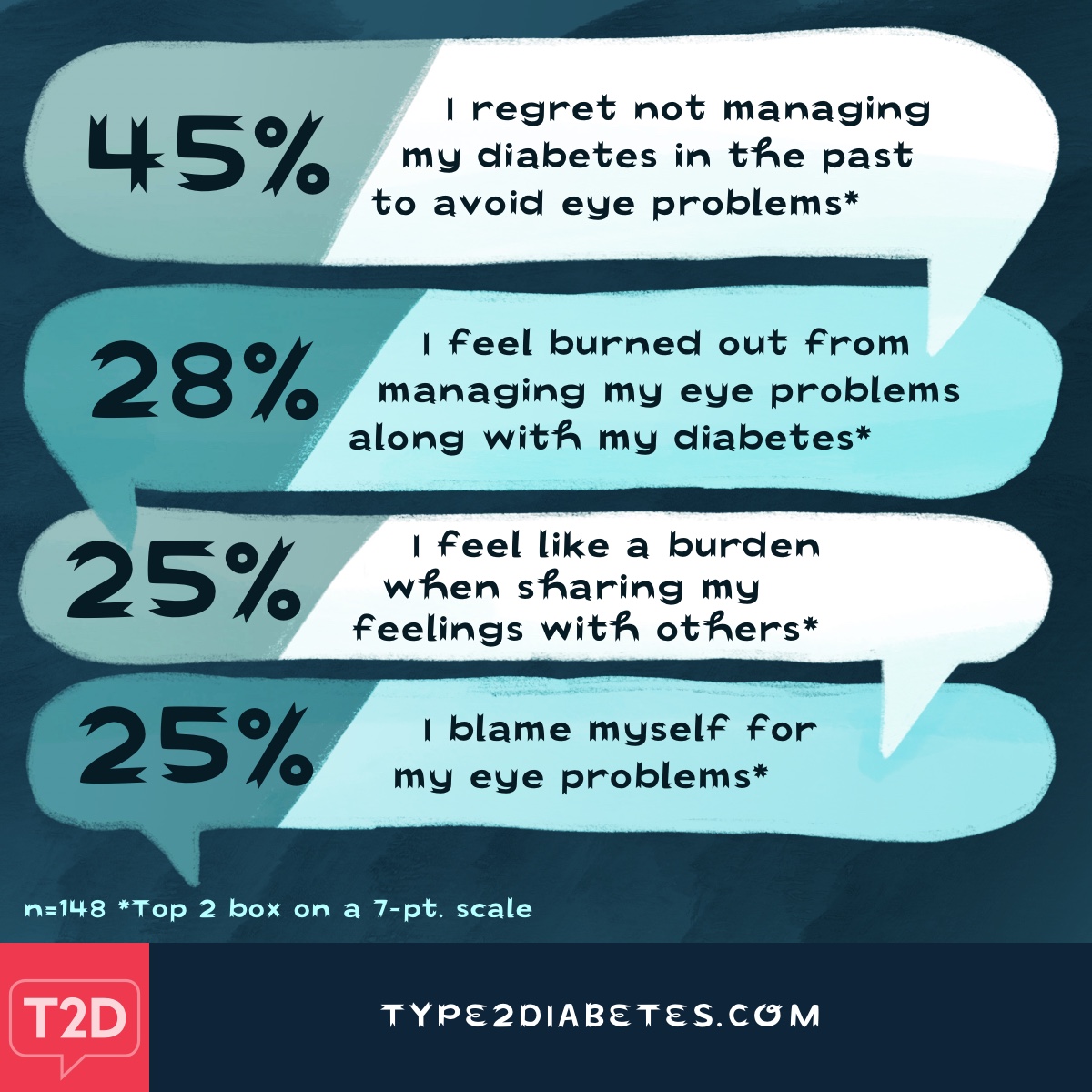Vision Complications of Type 2 Diabetes
Vision problems can be one of the most frightening complications of diabetes. If not managed properly, they can result in vision loss.
We surveyed people living with type 2 diabetes to better understand vision-related complications and the physical and emotional impact they have on day-to-day life.
Results from our Type 2 Diabetes Vision Complications Survey show that people living with diabetes can develop several vision-related complications. The most common complications include:
- Cataracts – 66 percent
- Diabetic retinopathy – 61 percent
- Glaucoma – 14 percent
- Diabetic macular edema – 14 percent
- Age-related macular degeneration – 11 percent
Impact of vision problems
People living with vision problems have to manage many symptoms. Responses from our survey show that these impacts include:
- Trouble seeing at night – 55 percent
- Blurred vision – 51 percent
- Sensitivity to changes in light – 45 percent
- Sudden flashes or floaters – 32 percent
- Eye or head pain – 22 percent
- Blind spots – 11 percent
- Double vision – 8 percent
All these symptoms have a significant impact on daily life.
Treatment for vision problems
Treatment and management of vision problems are extensive. Many survey respondents shared that they have had surgery and take medicines to address their vision problems. Plus, about half of the respondents have made considerable lifestyle changes to manage their vision. Some of the lifestyle changes include:
- Blood pressure control – 95 percent
- Wearing eye protection – 83 percent
- Quit smoking – 64 percent
- Changing diets – 55 percent
- Maintaining a healthy weight – 54 percent
- Exercise – 52 percent
The emotional impact
Vision problems don’t just affect eyesight. They also have a significant emotional and psychological impact, causing feelings of regret and self-blame.
The Type 2 Diabetes Vision Complications Survey was conducted online in December 2018. The survey was completed by 148 people living with type 2 diabetes.





Join the conversation